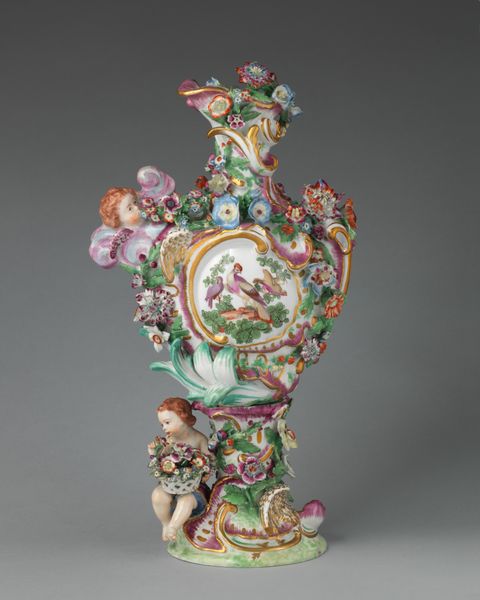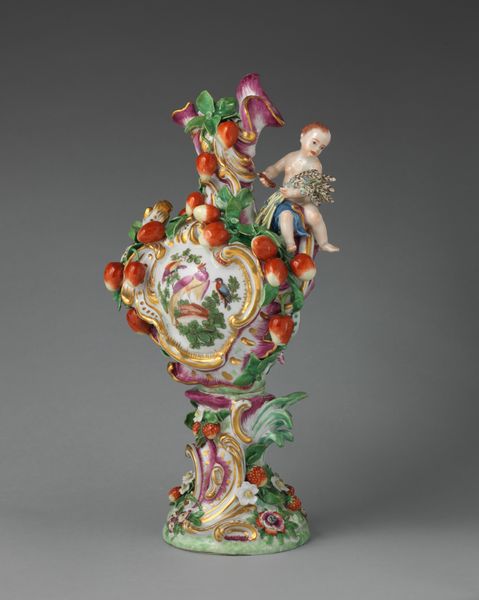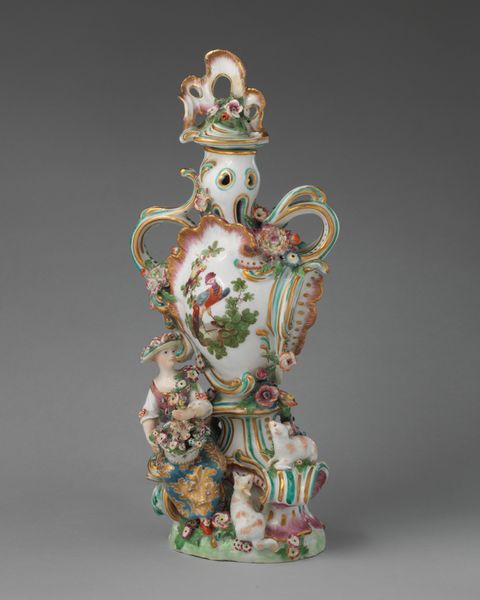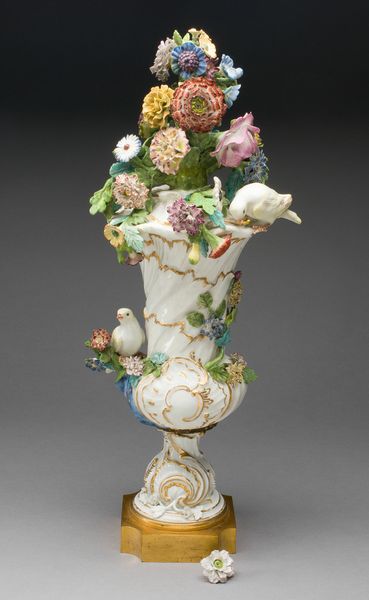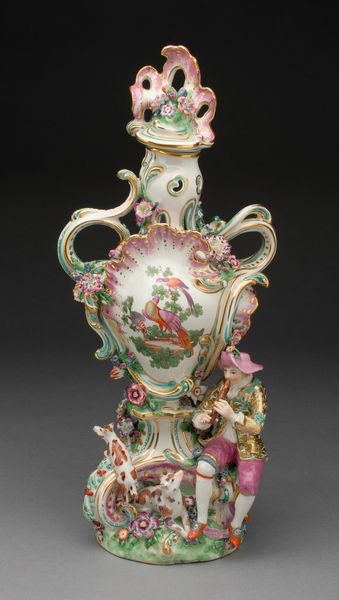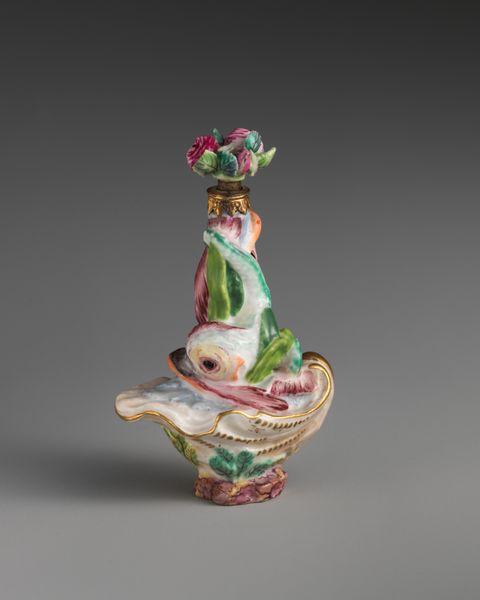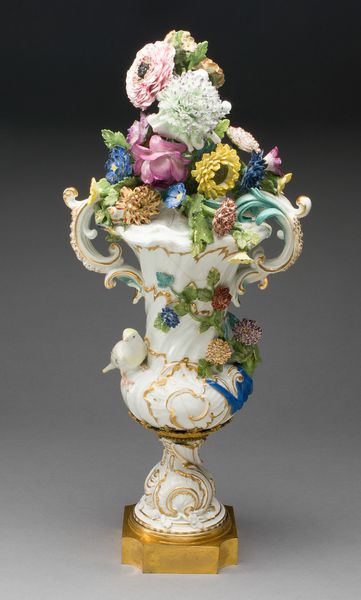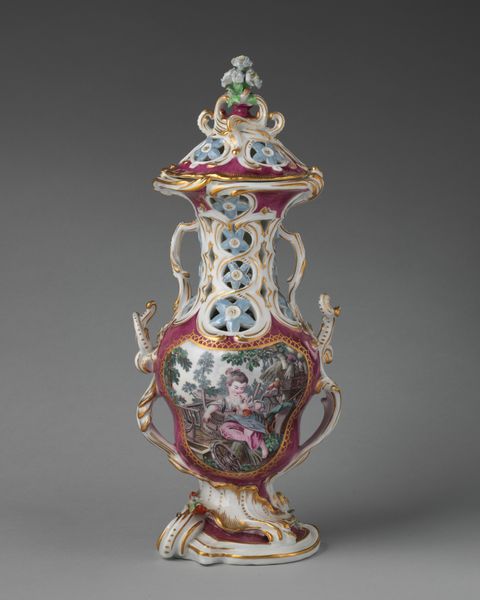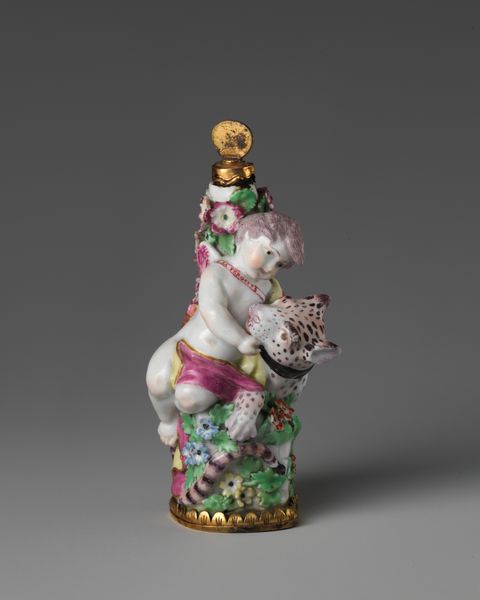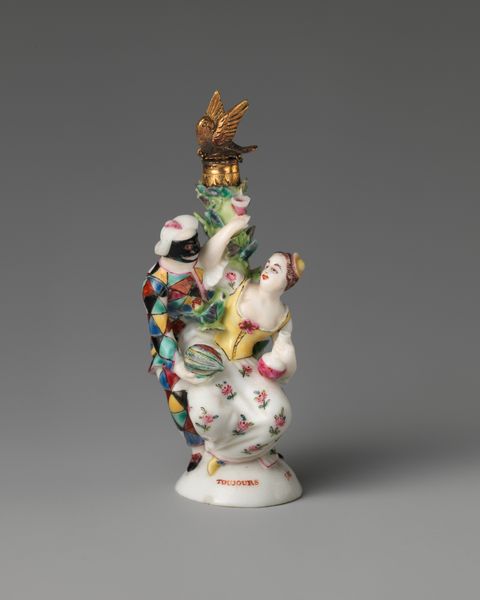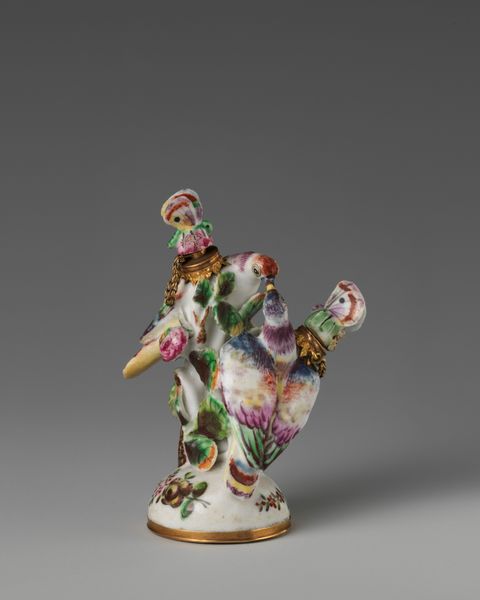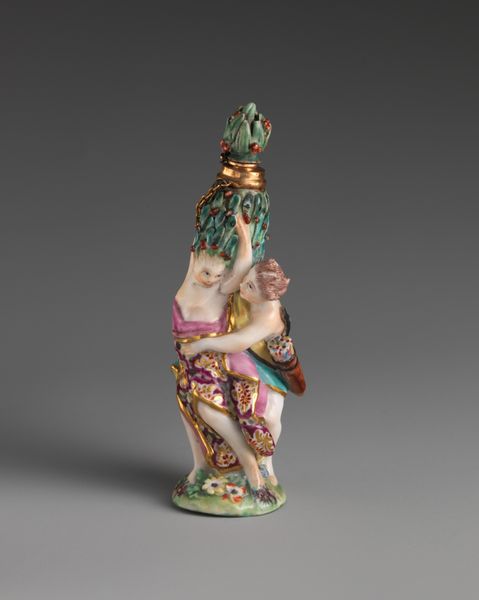
ceramic, porcelain, sculpture
#
allegory
#
ceramic
#
bird
#
porcelain
#
figuration
#
sculpture
#
decorative-art
#
miniature
#
rococo
Dimensions: Height: 14 1/4 in. (36.2 cm)
Copyright: Public Domain
Editor: Here we have a porcelain vase, crafted between 1755 and 1765 by the Chelsea Porcelain Manufactory. It’s currently housed in the Metropolitan Museum of Art. The ornamentation, especially the cherub and the vibrant grapes, gives it a playfully decadent feel. How do you interpret this piece? Curator: Well, it’s crucial to recognize the Rococo style of this piece not as mere ornamentation, but as a reflection of its time, specifically, the pre-revolutionary aristocracy in France and England. Think about what this object *meant* to those who owned it. How do we see notions of class, wealth, and even privilege made manifest? Editor: I see your point. It’s definitely more than just a pretty vase. The cherub eating grapes almost feels symbolic of that aristocratic indulgence. Curator: Precisely. The allegorical depictions of abundance, the birds… consider them a carefully constructed statement of power and affluence. Even the material – delicate porcelain – speaks volumes about access and trade during that era. Editor: It's fascinating how much historical context is embedded in what initially appears to be just a decorative object. Were there specific political messages in art like this? Curator: Not necessarily explicit messages, but these objects reinforce the status quo, normalize excess, and promote a specific vision of beauty, elegance and naturalized dominion. This object becomes a form of cultural capital. Editor: I never considered art could function that way. Curator: Looking at decorative arts with this lens allows us to engage critically with the values of a particular period. We can examine how art played a role in legitimizing certain social hierarchies. Editor: I've definitely learned to see past the surface prettiness of decorative objects and explore the historical narratives they tell. Thanks for helping me unpack it! Curator: My pleasure. Let’s keep asking what is just below the surface, always!
Comments
No comments
Be the first to comment and join the conversation on the ultimate creative platform.
